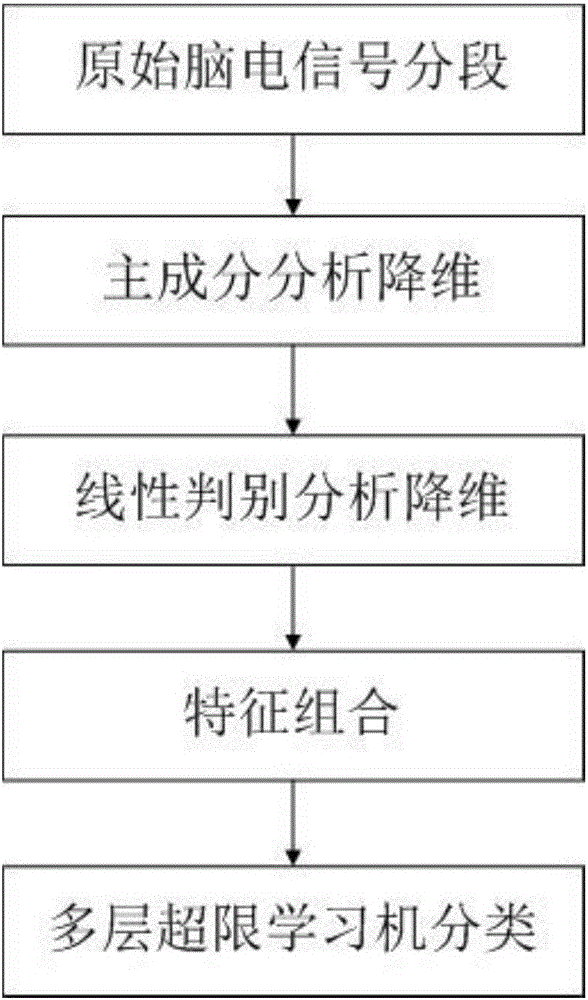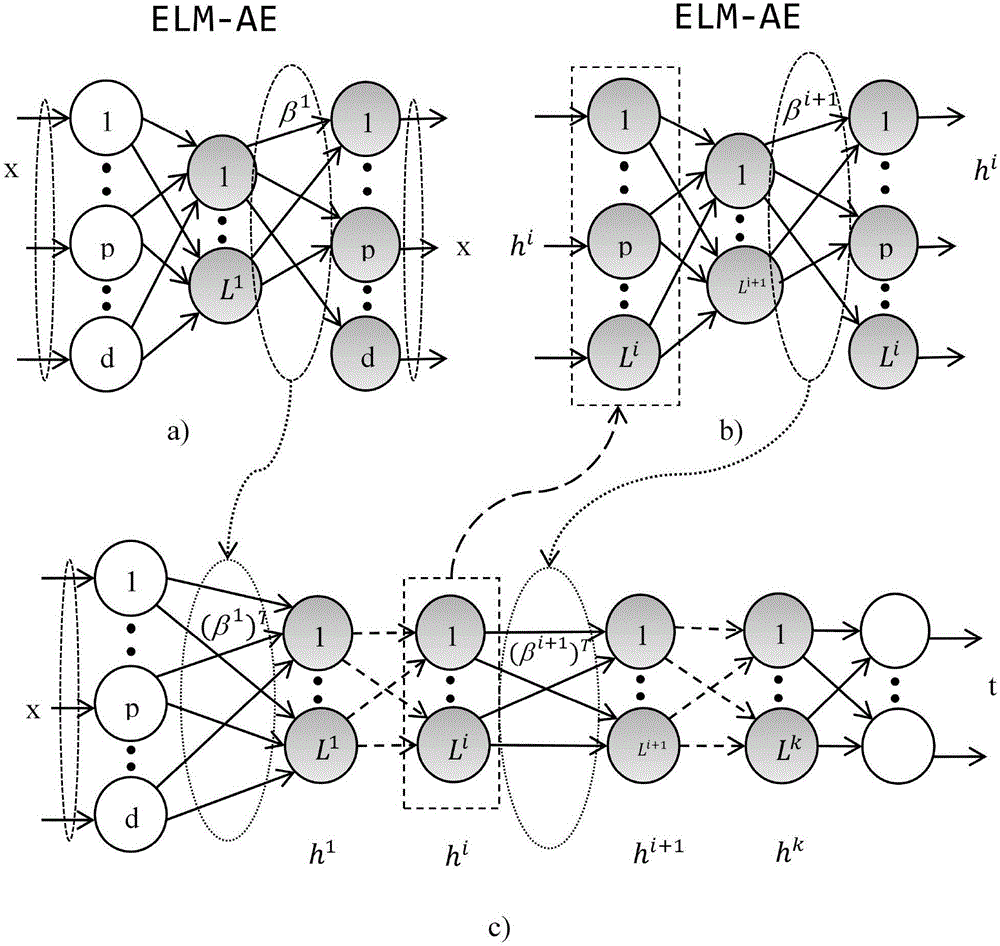Motion imagery electroencephalograph classification method based on multilayer extreme learning machine
An ultra-limited learning machine and EEG technology, which is applied in the field of motor imagery EEG signal classification to achieve the effect of low time consumption and improved classification accuracy.
- Summary
- Abstract
- Description
- Claims
- Application Information
AI Technical Summary
Problems solved by technology
Method used
Image
Examples
Embodiment Construction
[0017] The present invention will be further described below in conjunction with the accompanying drawings and specific embodiments.
[0018] Suppose there is a training data set TrainData and a set of test data sets TestData, the sample size of TrainData is N, and the dimension is D; the sample size of TestData is M, and the dimension is also D. Among them, the samples in TrainData and TestData belong to K categories.
[0019] Motor imagery EEG signal classification method based on multi-layer extreme learning machine, the flow chart is as follows figure 1 shown.
[0020] Step 1: Divide the TrainData and TestData into S-segment EEG signals by means of fixed time window division. TrainData i Represents the i-th sub-signal in the training data set, and the dimension of each sub-signal is D i (i=1,2,...,S). TestData i Represents the i-th sub-signal in the test data set, and the dimension of each sub-signal is D i (i=1,2,...,S). Because of the fixed time window used, the ...
PUM
 Login to View More
Login to View More Abstract
Description
Claims
Application Information
 Login to View More
Login to View More - Generate Ideas
- Intellectual Property
- Life Sciences
- Materials
- Tech Scout
- Unparalleled Data Quality
- Higher Quality Content
- 60% Fewer Hallucinations
Browse by: Latest US Patents, China's latest patents, Technical Efficacy Thesaurus, Application Domain, Technology Topic, Popular Technical Reports.
© 2025 PatSnap. All rights reserved.Legal|Privacy policy|Modern Slavery Act Transparency Statement|Sitemap|About US| Contact US: help@patsnap.com



